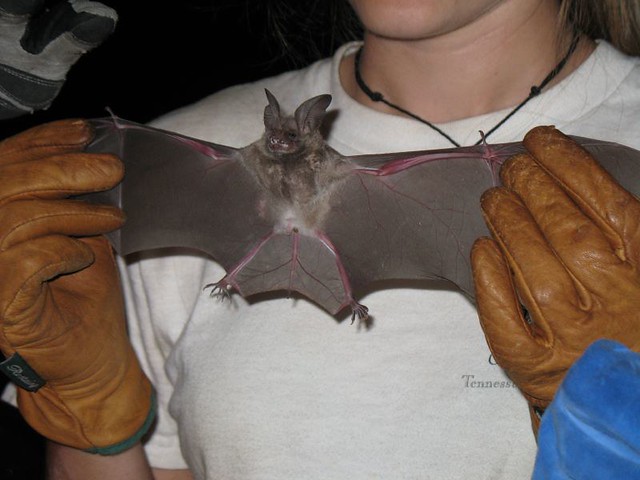Macrotus waterhousii Cladus: Eukaryota Name Macrotus waterhousii Gray, 1843 Type locality: Haiti. References Gray, J. E. 1843. [Letter from, on two new species of bats and a porcupine (Hystrix subspinosus Lichtenstein) in the British Museum, and a new Manis]. Proceedings of the Zoology Society of London, 1843: 21.
Conservation status: IUCN link: Macrotus waterhousii Gray, 1843 (Least Concern)
Sonora and Hidalgo (Mexico) south to Guatemala
Waterhouse's Leaf-nosed Bat (Macrotus waterhousii) is a species of bat in the Phyllostomidae family. It is found in Bahamas, Cayman Islands, Cuba, the Dominican Republic, Guatemala, Haiti, Jamaica, Mexico, and Puerto Rico.Waterhousii is also a big eared Bat which has ranges from Sonora to Hidalgo Mexico, south to Guatemala and the Greater Antilles (excluding Puerto Rico) and Bahamas.[1] This species roosts primarily in caves, but also in mines and buildings. This species is also insectivorous (see insectivore), primarily consuming insects of the order Lepidoptera and Orthoptera.[1] Another interesting fact about M. waterhousii is their mating and parturition times and how they vary from island to island with 4–5 months gestation.[1] References ^ a b c Murray, Kevin L., Theodore H. Fleming, Michael S. Gaines, and Dean A. Williams. "Characterization of Polymorphic Microsatellite Loci for Two Species of Phyllostomid Bats from the Greater Antilles (Erophylla Sezekorni and Macrotus Waterhousii)." Molecular Ecology Resources 8 (2008): 596-98. Print. Chiroptera Specialist Group 1996. Macrotus waterhousii. 2006 IUCN Red List of Threatened Species. Downloaded on 30 July 2007. Source: Wikipedia, Wikispecies: All text is available under the terms of the GNU Free Documentation License |
|


